What Is an Emoji Domain?
Definition: Emoji DomainAn Emoji Domain is a web address that includes one or more emojis. Emoji domains use the Punycode format to convert emoji characters into a format that can

In the ever-evolving landscape of cybersecurity, staying ahead of potential threats requires the use of advanced reconnaissance and enumeration tools. These tools help cybersecurity professionals identify, analyze, and mitigate vulnerabilities before they can be exploited by malicious actors. As of 2025, the following ten tools have emerged as the most widely used and effective solutions in the industry.
Nmap remains an essential tool for network discovery and security auditing. It provides a wide range of functionalities such as host discovery, port scanning, service detection, and OS fingerprinting. With its scriptable nature and robust scanning capabilities, Nmap enables security professionals to gain deep insights into network structures and potential vulnerabilities.
Wireshark is a powerful network protocol analyzer that allows cybersecurity experts to capture and examine network traffic in real time. With its deep packet inspection capabilities, Wireshark is invaluable for identifying anomalies, troubleshooting network issues, and detecting malicious activities.
Metasploit is a widely used penetration testing and vulnerability research tool. It provides an extensive library of exploits, payloads, and post-exploitation tools, making it a preferred choice for ethical hackers and security teams.
Burp Suite is a leading tool for web application security testing. It helps identify vulnerabilities such as SQL injection, cross-site scripting (XSS), and security misconfigurations through automated and manual testing techniques.
Recon-ng is a powerful reconnaissance tool designed for open-source intelligence (OSINT) gathering. Its modular framework allows for efficient data collection and analysis, helping cybersecurity professionals streamline reconnaissance efforts.
Shodan is often referred to as the “Google for hackers” because it allows users to discover internet-connected devices, including servers, webcams, and IoT devices. It provides critical insights into exposed services and security vulnerabilities.
Nessus is a widely used vulnerability scanner that helps organizations identify security risks across various systems and networks. It offers detailed reports and remediation guidance to strengthen security postures.
Nikto is an open-source web server scanner that detects security issues such as outdated software, insecure files, and configuration problems. It is widely used for assessing web application security.
OpenVAS is a full-featured vulnerability scanning tool that provides detailed security assessments for networks and systems. Its regularly updated feed of network vulnerability tests ensures that organizations stay ahead of emerging threats.
Aircrack-ng is a specialized toolset designed for Wi-Fi network security assessments. It allows cybersecurity professionals to monitor, attack, and crack wireless networks to identify vulnerabilities.
ITU provides you with a select grouping of courses desgined specfically to guide you on your career path. To help you best succeed, these specialized career path training series offer you all the essentials needed to begin or excel in your choosen IT career.
These top 10 reconnaissance and enumeration tools play a crucial role in modern cybersecurity operations. Whether it’s network scanning, penetration testing, vulnerability assessment, or OSINT gathering, each of these tools provides unique capabilities that help organizations defend against cyber threats. By leveraging these tools effectively, security professionals can enhance their proactive defense strategies and mitigate risks in an increasingly complex digital landscape.
Reconnaissance and enumeration tools are used in cybersecurity to gather information about networks, systems, and applications. These tools help security professionals identify vulnerabilities, detect potential attack vectors, and analyze digital footprints before cybercriminals exploit them.
Nmap (Network Mapper) is widely considered the best reconnaissance tool for network scanning. It allows security professionals to discover hosts, detect services, identify open ports, and analyze network security.
Wireshark is a network protocol analyzer that captures and inspects live network traffic. It helps cybersecurity professionals identify malicious activity, troubleshoot network issues, and analyze packet-level data to detect anomalies.
Yes, Shodan is a legal tool used for reconnaissance. It functions as a search engine for internet-connected devices, helping security professionals identify exposed systems and vulnerabilities. However, using it to access unauthorized systems is illegal.
Active reconnaissance involves direct interaction with a target system, such as scanning for open ports or running penetration tests. Passive reconnaissance, on the other hand, gathers information without interacting directly with the target, using sources like search engines, public records, and social media.
Lorem ipsum dolor sit amet, consectetur adipiscing elit. Ut elit tellus, luctus nec ullamcorper mattis, pulvinar dapibus leo.
$49.99 Original price was: $49.99.$16.99Current price is: $16.99. / month with a 10-day free trial
Definition: Emoji DomainAn Emoji Domain is a web address that includes one or more emojis. Emoji domains use the Punycode format to convert emoji characters into a format that can
Definition: Unicode Transformation Format (UTF)Unicode Transformation Format (UTF) is a set of character encoding standards that represent each character in the Unicode character set. These encodings are designed to encode
Definition: jQueryjQuery is a fast, small, and feature-rich JavaScript library designed to simplify the client-side scripting of HTML. It was created by John Resig in 2006 and has since become
Definition: Function OverloadingFunction overloading is a programming concept that allows multiple functions to have the same name but differ in the type or number of their parameters. This feature, found
Definition: Git SubmodulesGit submodules are a feature in Git that allow you to include and manage external repositories within another repository. Submodules enable you to track and integrate code from
Definition: Syntax HighlightingSyntax highlighting is a feature in text editors and integrated development environments (IDEs) that displays source code in different colors and fonts according to the category of terms.
Definition: Explicit Congestion Notification (ECN)Explicit Congestion Notification (ECN) is a mechanism in computer networking that allows network devices to signal congestion to end hosts without dropping packets. ECN is an
Definition: Gzip File FormatThe Gzip file format is a widely used compression format that combines data compression and file packaging. It is used to compress single files, reducing their size
Definition: Data OntologyData ontology is a structured framework that defines the relationships and categories within a set of data. It involves creating a formal representation of a knowledge domain using
Definition: Multipeer ConnectivityMultipeer Connectivity is a framework provided by Apple that enables the discovery and communication between nearby devices without requiring internet connectivity. This framework allows for the creation of
Definition: XAMPPXAMPP is a free and open-source cross-platform web server solution stack package developed by Apache Friends, consisting mainly of the Apache HTTP Server, MariaDB database, and interpreters for scripts
Definition: GPG (GNU Privacy Guard)GPG (GNU Privacy Guard) is a free software tool that provides cryptographic privacy and authentication for data communication. It is a part of the GNU Project
ENDING THIS WEEKEND: Train for LIFE at our lowest price. Buy once and never have to pay for IT Training Again.

Get ready for the updated 220-1201 & 220-1202 exams with our brand-new CompTIA A+ training—designed to help you pass with confidence and start your IT career strong. Access this course and over 2,900 hours of expert-led IT training when you sign up for any of our All-Access Passes. Don’t miss out—enroll now and start learning today!